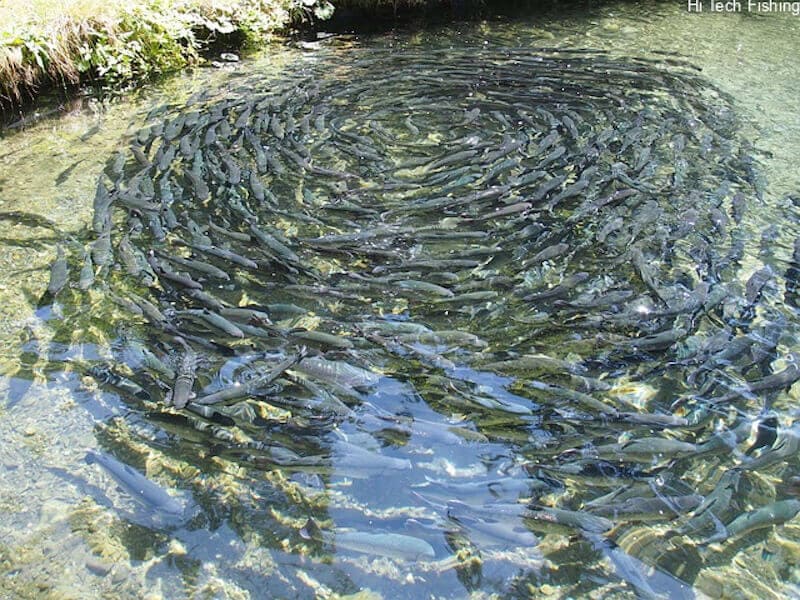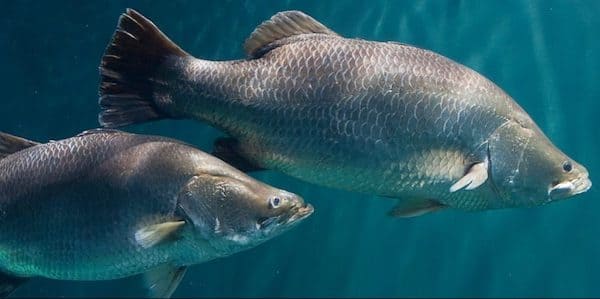
In recent years, aquaculture has emerged as a crucial contributor to global fish and seafood supply. One prominent technique within this sector is the practice of tank farming, where fish are cultivated in on-land tanks rather than natural water bodies such as lakes, rivers, or oceans. This approach boasts numerous benefits over conventional aquaculture practices, such as enhanced control over environmental elements like water temperature and quality. Additionally, it lowers the risk of disease proliferation and facilitates fish farming in regions where natural water sources are either limited or contaminated.
There are several types of fish that are commonly farmed in on-land tanks, each with their own unique growth rates, time to harvest, and size at harvest. Here are a few examples:
Tilapia: Tilapia is a popular fish for aquaculture due to its hardiness and fast growth rate. The growth rate of tilapia can vary depending on the specific breed and the water temperature in the tank. It typically takes 5-7 months for tilapia to reach market size, which can vary from 0.5-1.5 pounds depending on the specific breed and farming practices. Tilapia can be shipped fresh or flash frozen, depending on the farmer's preferences and distribution channels. They are typically fed a diet of pellets that include fish meal, soybean meal, and other ingredients, and prefer water temperatures between 82-86 degrees Fahrenheit. Tilapia can be raised with other marine creatures like shrimp and freshwater clams, and co-mingling can create a balanced ecosystem in the tank.

Trout: Trout are often raised in tanks for their flavorful and nutritious meat. The growth rate of trout can vary depending on the specific breed and the water temperature in the tank. It typically takes anywhere from 6-18 months for trout to reach market size, and they can weigh between 1-2 pounds at harvest. Trout can be shipped fresh or flash frozen, depending on the farmer's preferences and distribution channels. They are typically fed a diet of pellets that include fish meal, soybean meal, and other ingredients, and prefer water temperatures between 50-60 degrees Fahrenheit. Co-mingling with other marine creatures in trout farming is not common, as the fish are typically raised in separate tanks to reduce the risk of disease outbreaks and other issues.
Salmon: Salmon are primarily raised in ocean net pens, but there are some on-land tank farms that raise salmon for their meat. It typically takes 18-24 months for salmon to reach market size, and they can weigh anywhere from 4-12 pounds at harvest, depending on the specific breed and farming practices. Salmon can be shipped fresh or flash frozen, depending on the farmer's preferences and distribution channels. Salmon are usually provided a diet of pellets composed of fish meal, soybean meal, and various other ingredients, thriving best in water temperatures ranging between 50-60 degrees Fahrenheit. While it's uncommon for farmed salmon to intermingle with other species, concerns have been raised about the potential for disease transmission between captive and wild salmon populations. In response, some farming operations have instituted measures to lower this risk, such as distancing the farmed salmon from wild salmon migration routes.
Catfish: Catfish are a popular choice for aquaculture in the southern United States, raised predominantly in extensive on-land tanks. Generally, it takes about 12-18 months for them to attain market size, with their weight at harvest fluctuating between 1-3 pounds, contingent upon the specific breed and farming methodologies. Catfish can be shipped fresh or flash frozen, depending on the farmer's preferences and distribution channels. They are typically fed a diet of pellets that include fish meal, soybean meal, and other ingredients, and prefer water temperatures between 75-85 degrees Fahrenheit. While catfish can be raised with other species like shrimp and freshwater clams, co-mingling should be managed carefully to prevent disease outbreaks and other issues.
Barramundi: Barramundi is a popular fish for aquaculture due to its high growth rate and mild, buttery flavor. It typically takes 12-18 months for barramundi to reach market size, which can range from 1-3 pounds depending on the specific breed and farming practices. Barramundi can be shipped fresh or flash frozen, depending on the farmer's preferences and distribution channels. They are typically fed a diet of pellets that include fish meal, soybean meal, and other ingredients, and prefer water temperatures between 77-86 degrees Fahrenheit. While barramundi can be raised with other marine creatures like shrimp and snails, co-mingling can increase the risk of disease outbreaks and should be managed carefully.

When harvesting tank farmed fish, there are two main methods: shipping the fish fresh or flash freezing them. Fresh fish are typically shipped live or immediately after being harvested and are often sold at local markets or restaurants. Flash frozen fish, on the other hand, are typically processed and frozen within a few hours of being harvested and can be shipped to destinations around the world.
There are several types of feed and food used to grow fish in tanks and pens, including artificial, natural, and organic options.
Artificial feed is the most commonly used type of feed in aquaculture, as it is easy to store, transport, and handle. These feeds typically consist of a mix of plant and animal proteins, as well as vitamins and minerals to meet the nutritional needs of the fish. Some artificial feeds may also include antibiotics, growth hormones, or other additives to promote growth and prevent disease.
In addition to feed, fish farmers must also consider the type of food that the fish may consume in their environment, such as algae or other aquatic plants. By managing these natural food sources, farmers can create a more balanced ecosystem in the tanks or pens and reduce the amount of artificial feed needed to sustain the fish.
The type of feed and food used to grow fish in tanks and pens depends on a variety of factors, including the species of fish being farmed, the specific farming practices used, and consumer demand.
One potential challenge with tank farming is the potential for co-mingling with other marine creatures like other types of fish, snails, prawns, and freshwater clams. Depending on the specific farm's practices, co-mingling can either be an effective way to utilize the full capacity of the tank and create a balanced ecosystem, or it can increase the risk of disease outbreaks and other issues.
The practice of fish farming in tanks is an evolving approach to aquaculture that presents numerous benefits when compared to conventional methods. By raising fish in on-land tanks, farmers can exercise greater control over environmental factors and reduce the risk of disease outbreaks. Various species of fish are typically cultivated in tanks, each boasting distinctive growth speeds, harvest periods, and dimensions upon harvesting. The type of feed and food used to grow fish in tanks and pens can vary from artificial, natural, to organic options depending on the farmer's practices, the fish species, and consumer preferences. Natural food sources like algae and aquatic plants can also be utilized to create a more balanced ecosystem in the tanks or pens. While co-mingling with other marine creatures can be beneficial, it should be managed carefully to prevent disease outbreaks and other issues. Overall, tank farming is a promising approach to meet the growing demand for fish and seafood while promoting sustainable and environmentally friendly practices.
Farmed Fish - Article Posted Jan 5, 2024